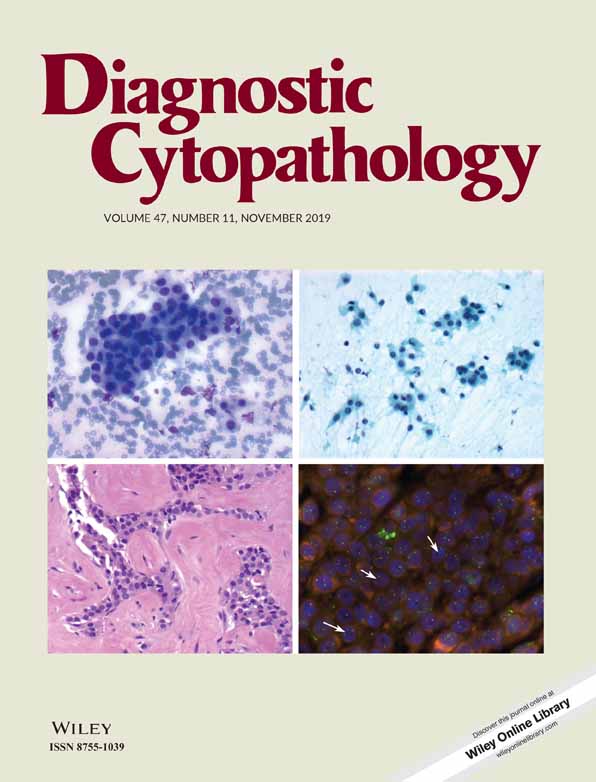Application of the Milan System for Reporting Salivary Gland Cytopathology: A retrospective study in a tertiary institute
Abstract
Background
Fine needle aspiration (FNA) cytology has been widely used in the preoperative evaluation of salivary gland lesions. The Milan System for Reporting Salivary Gland Cytopathology (MSRSGC) is a tiered risk-stratification scheme designed to standardize reporting and facilitate decision making. We aimed to clarify the validity and diagnostic utility of the MSRSGC-based classification of salivary gland lesions.
Methods
A total of 1020 salivary gland FNA specimens were retrieved between 2008 and 2017, with histologic follow-up data available for 349 specimens. Within the present retrospective study, each specimen with follow-up data was reclassified according to the MSRSGC diagnostic categories: nondiagnostic, nonneoplastic, atypia of undetermined significance (AUS), benign neoplasm, salivary gland neoplasm of uncertain malignant potential (SUMP), suspicious for malignancy (SM), and malignant. The risk of malignancy (ROM) was calculated based on the histologic follow-up data.
Results
The diagnostic accuracy, sensitivity, specificity, positive predictive value, and negative predictive value of the MSRSGC-based classification of the malignant potential of salivary gland lesions were 80.1%, 70.4%, 99.2%, 90.5%, and 96.7%, respectively. The ROM calculated for specimens assigned to the nondiagnostic, nonneoplastic, AUS, benign neoplasm, SUMP, SM, and malignant categories were 8.6%, 15.4%, 36.8%, 2.6%, 32.3%, 71.4%, and 100%, respectively.
Conclusion
The present results confirm the validity and diagnostic utility of MSRSGC, supporting its use in clinical practice to help devise adequate management strategies for salivary gland lesions.
CONFLICT OF INTEREST
The authors declared no potential conflicts of interest with respect to the research, authorship, and/or publication of this article.




